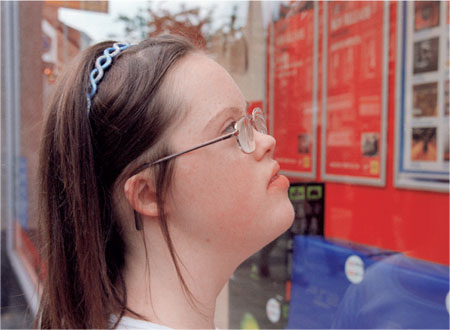Chapter 4
Managing the Patient With a Learning Disability
Aim
The aim of this chapter is to outline the common causes of learning disability and how they impact on oral health and patient management.
Outcome
After reading this chapter you will have an understanding of the common conditions associated with learning disability, and how it impacts on oral health and its management. You will also understand the issues related to consent and patient management.
Introduction
Learning disability is a significant impairment of intelligence and social functioning acquired before adulthood. Its cause can be genetic, congenital, or acquired.
Learning disability affects the way someone learns, communicates and carries out everyday activities. The amount of support a person requires throughout life varies according to the severity of their learning disability and whether or not they have additional physical disability. People with a mild learning disability may need little support, whereas those with severe learning disability may need support with all types of daily living activities. However, people with a learning disability can learn and achieve with the right support.
Demography
In most developed countries around 2.5% of the population have a learning disability. In the UK this equates to 1.5 to 2 million people. Of these people, 200,000 (10%) have a severe or profound disability. Almost 15% of this subgroup (over 29,000 people with a severe or profound learning disability) live at home with carers aged over 70 years of age. Overall, more males are affected by learning disability than females.
Additional Disabilities
People with learning disabilities have an increased prevalence of associated disabilities including:
-
physical impairments
-
sensory impairments
-
behavioural problems
-
epilepsy
-
congenital heart defects, and
-
mental health problems.
25% of people with a learning disability are profoundly disabled with additional disabilities.
Causes
The commonest causes of learning disability are Down’s syndrome and Fragile X syndrome. It also occurs in Velo-Cardio-Facial (or DiGeorge) syndrome. Learning disability is commonly associated with the spectrum of autistic disorders.
1. Down’s Syndrome (DS) is a genetic condition caused by a chromosomal abnormality (usually trisomy of chromosome 21) that results in a characteristic appearance and learning disability, which ranges from mild to severe. There are currently more than 26,000 people in the UK with DS where its incidence is 1.5 per 1000 births. Its prevalence is likely to rise in the coming decades because life expectancy of people with DS has improved dramatically.
Characteristic appearance – of short stature, relatively short arms and legs, broad hands and short fingers, flattened face and occiput, slanting eyes and prominent epicanthic folds, and underdevelopment of the middle third of face and relative prognathism (Fig 4-1).

Fig 4-1 Characteristic appearance in Down’s syndrome.
Oro-dental characteristics – include delayed development and eruption of both dentitions, hypodontia, microdontia, hypocalcification and hypoplastic defects, occlusal problems, and a high incidence of severe early onset periodontal disease. Mouth breathing, which may occur because of smaller nasal passages, contributes to increased gingival inflammation around anterior teeth.
General features – include cardiac anomalies (40%), vision impairments (50%), hearing impairment (mild to moderate in 50%), atlanto-axial instability or subluxation (20%), compromised immune system, hypothyroidism, increased risk of epilepsy, and increased risk of Alzheimer’s disease (45% of people reaching the age of 55).
Considerations for oral health and dental treatment – required as a result of general health features are outlined in Table 4-1.
| General condition | Implications for oral health/dental treatment |
| Cardiac anomalies (congenital in children, and mitral valve prolapse in adults) |
|
| Visual impairment (including myopia, hyperopia, astigmatism and cataracts) |
|
| Hearing impairment (as a result of middle ear infections and fluid accumulation) |
|
| Atlanto-axial joint instability |
|
| Compromised immune system |
|
| Epilepsy |
|
| Alzheimer’s disease |
|
2. Fragile X Syndrome (FXS) is the most common cause of inherited learning disability occurring in approximately 1 in 3600 males and 1 in 4000 to 6000 females. It is also the most common known cause of autism, being respo/>
Stay updated, free dental videos. Join our Telegram channel

VIDEdental - Online dental courses


